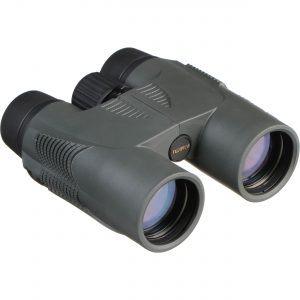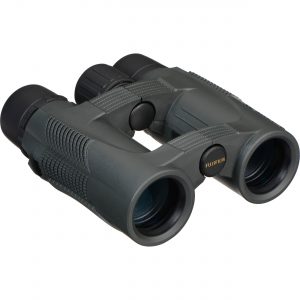FUJIFILM KF 10x32W
Rated 5.00 out of 5 based on 1 customer rating
(2 customer reviews)
R5,100
Key Features
In stock
SKU: 4,54741E+11
Category: Binoculars
Additional information
| Weight | 480 kg |
|---|---|
| Dimensions | 13.1 × 13.9 × 5.3 cm |
| Magnification | 10x |
| Objective diameter (mm) | 32 |
| Eye relief (mm) | 14.5 |
| Field of view | 6.5 Degrees |
| Field of view at 1,000m (m) | 113.5 |
| Exit pupil (mm) | 3.2 |
| Twilight factor | 17.8 |
| Minimum focus (m) | 2.5 |
| Range for interpupillary distance (mm) | 58-72 |
| Stabilisation freedom | – |
| Power supply | – |
2 reviews for FUJIFILM KF 10x32W
Add a review Cancel reply








Fujifilm South Africa –
For a full review on this and the other Binoculars in the Fujifilm Range, have a look at a review from Etienne Marais over here:
Fujifilm Binocular Review by Etienne Marais
Etienne Marais –
Fujinon KF ‘W’ series
KF 10X32W & KF 8X32W
My first impression of these binoculars is how small and light they are. The design is handsome and very easy in the hands, plus the binoculars have a rugged feel with textured rubberized casing over the aluminium alloy body. The rubberized casing has a system of well positioned grooves (tread) which is strategically placed for optimal grip. They look like neat, small, highly quality roof prism binoculars.
The binoculars boast phase-corrected BK7 roof prisms with anti-reflection fully multi-coated optics. The durable aluminium-alloy chassis makes the binoculars both tough and light at the same time. As is now standard with most roof prisms, the unit is nitrogen sealed, waterproof and fog proof. Build quality looks good and there are no obvious flaws in terms of ruggedness.
I have to admit to believing that an objective of less than 40mm would not provide sufficient light for quality birding, and that the reduced field of view in binoculars with an objective lens of only 32mm would make these less than ideal. In one sense the advances in light transmission and lens coatings have made a bigger objective somewhat less important, and the smaller objective makes for smaller and lighter binoculars.
It is no coincidence that 8X32 and 8X30 binoculars are now featured by all major manufacturers. There is something, however, in many of the reviews you read which I want to take issue with. Binoculars which are 8X32 are still seen by reviewers as more of an “entry level” spec than the “full size” binoculars such as 10X42 or even 8.5X42. Reviews and reviewers often say they are ideal for beginner birders, casual birders or safari goers, or as a spare pair to take on a hike. Some manufacturers refer to them as a companion, which means to take with you wherever you go. But what else should binoculars be?
For me, a typical day in the field is from well before dawn, until late in the day. One wears binoculars permanently (since you never know when you might miss something!). My standard binoculars of use (Swarovski 10X42) are a substantial piece of equipment, coming in at 780g. This makes for a more tiring wear – even with good binocular harnesses, which I believe are essential for serious birders. In contrast the Fujinon 10X32 are just 480g and the 8X32 470g.
After field testing them in the day, I found I did not bother to take them off when making coffee or even eating lunch – the binoculars disappeared into my permanent birding attire! When out in the field I usually have a scope, sound equipment and sometimes a camera, so the idea of something compact and handy just feels right for me personally.
My initial impression on looking through both pairs was that the optics are excellent. Sharp, bright, and easy on the eye. Comparing them with some other models in the same class (Nikon and Steiner were compared), they showed excellent optical performance.
Compared to the Swarovski EL 10X42, the image is not quite as sharp at the edges, with slight distortion if you look for it. But then you are comparing binoculars that cost 8X more.
Personally, I doubt this has any bearing on the actual birding experience. When birding, fast focus adjustment requires a smooth, easy turn of the central focus wheel. Both models feel identical and the focus is smooth and efficient. Diopter adjustment should be simple and precise, without the possibility that it changes due to movements and bumps while you are birding. The diopter adjustment ring is set a little bit in, and in line with the focus wheel. It has a pleasing stiff feel and diopter adjustment is aided by a pattern on the wheel which should make it easy to remember where to position the wheel.
The exit pupil for the 10X32 is 3.2mm and that for the 8X32 is 4.0mm (this is the same across all brands since the size of the exit pupil is basic physics). I must admit that after extensive field use of different binoculars (i.e. 8X32 vs 10X32), I could not really discern a difference. In low light conditions for me personally (58 years old) it seemed that the smaller exit pupil size did not really matter.
The eye-caps turn in and out easily, with four different settings to adjust for your own preference as regards eye-relief (how far do you want your eye from the lens). Eye-relief is on the short side however at 14.5mm – which means that for some eyeglass wearers these binoculars might not be ideal since their eyes will be too far from the lens.
The field of view of the 8X32 is a very good 7.5o while the 10X32 have a good 6.5o field (good for a X10). Close focusing is also quite adequate for birding, coming in at 2.5m (although I could focus comfortably with the 10X32 at 2.3m). I say adequate for birding since it is hardly ever that one wants to look at a bird at less than 2.5m, but if you happen to be really keen on butterflies or dragonflies then other brands have binoculars that focus at a shorter range.
To really test the Fujinon offering in terms of low-light performance, I conducted a field comparison with a pair of Swarovski EL 8.5X42. The EL is class leading in terms of brightness and in the EL 8.5X 42 formulation boasts exceptional low-light performance and field of view. The test involved identifying birds on a golf course after sunset, and as the light faded, one could see if there really was as much difference as one might expect.
Overall, the Fujinon W series showed rather good performance in these conditions. While the Swarovski presented an overall slightly brighter image at every stage of the test, the visible detail on the birds we were looking at were remarkably good. In fact, it is difficult to see if using the more affordable Fujinon W series would result in any serious disadvantage from a birding identification point of view in low light conditions.
It is worth noting that the cheaper KF8X42H performed very well in this test, being rather close to the Swarovski in terms of brightness in very low light conditions. This is not surprising given the bigger objective lens. All things being equal, an 8X42 will always outperform an 8.5X42 in low light conditions.
I also tested the Fujinon TS 12X28 (baby stabilizer) and the TSX 14X40 (big boy stabilizer) in the same low light test and was somewhat surprised at their optical performance in these low-light conditions. Technically the twilight factor in a pair of 12X28 or 14X40 is much poorer than the binoculars, but there is something that the stabilization does that improves the optical data to make for a clearer image, even with the poorer light-gathering fundamentals of these binoculars. In a nutshell, stabilization provides better quality optical data than without!
Overall, the Fujinon KF 8X32W and KF 10X32W are excellent binoculars and will compete with many other brands in the mid-range of binoculars, or among those who would rather book a birding trip to Brazil with the difference between these and the top-priced brands. Testing them has certainly changed my views of what is ideal and having used them in the field I am quite comfortable with carrying them as my standard pair.
Does one go 10X32 or 8X32 – that is the question? This is really a personal choice and for many birders I believe the reduced “shake effect” of using an 8X balances out the larger image that a 10X gives. But if you need a 10X in a lighter package, you need go no further than the 10X32W. For me personally the slightly bigger field of view and marginally better performance in low light conditions tip the scales towards the KF 8X32W as the pair I would most comfortably include in my standard birding attire.
Summary – Fujinon KF ‘W’ series
• Design is handsome and easy in the hands.
• Binoculars have a rugged feel with textured rubberized casing over the aluminium alloy body.
• Build quality looks good.
• Weight allows binoculars to disappear into your permanent birding attire.
• Focus is smooth and efficient.
• Visible detail on the birds in low light conditions were remarkably good.
• I am quite comfortable with carrying them as my standard pair.